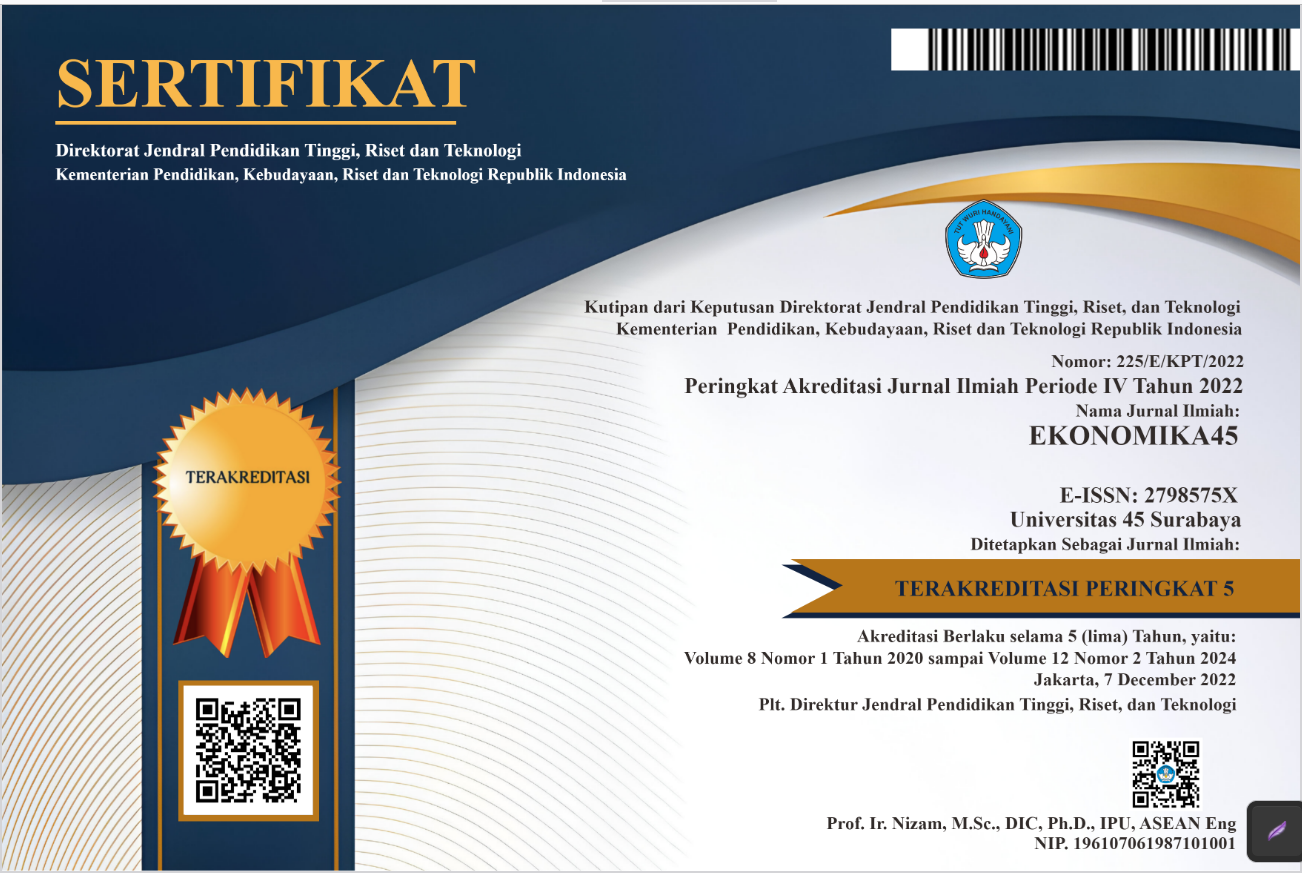Three-Party dalam Pengembangan Destinasi Wisata Bukit Kayoe Putih Mojokerto
DOI:
https://doi.org/10.30640/ekonomika45.v11i1.1754Keywords:
Bukit Kayoe Putih, Three-Party, Perhutani AAbstract
In the development of a tourist destination, abundant resources are essential, including facilities, infrastructure, and manpower. Collaborative efforts can help alleviate the heavy workload to create a successful tourist attraction. Bukit Kayoe Putih Tourism is an example of a destination that has effectively implemented a unique collaborative system, known as the three-party cooperation system, which is rarely seen in other tourist places. The parties involved in this collaboration are CV. Mitra Wisata Abadi, KPH Perhutani Mojokerto, and LMDH Kupang. This study primarily focuses on the analysis of the three-party cooperation system implemented at Bukit Kayoe Putih Tourism and its direct and indirect impacts. The study employed literature review for strategy and purposive sampling to conduct interviews with the directly involved parties in the three-party cooperation system to gain insightful perspectives and opinions. Furthermore, the researcher employed data triangulation to ensure the validity of the data in this study. The study discovered that the three-party cooperation system can enhance a tourist destination in terms of permits, employment opportunities, and development. It also found that this system can boost the local economy, both for the tourism sector itself and the surrounding village communities.
References
M. Sukmaratri and M. Damayanti, “Diversifikasi Produk Wisata Sebagai Strategi Pengembangan Daya Saing Wisata Kota Batu,” Jurnal Pembangunan Wilayah dan Kota, vol. 12, no. 3, pp. 325–335, 2016.
N. Tashandra, “Wisata Bukit Kayoe Putih Mojokerto: Jam Buka, Harga Tiket, dan Rute,” Kompas.com, Sep. 25, 2022.
D. M. Utami, “ANALISIS POTENSI KAWASAN OBYEK WISATA PANTAI ALAM INDAH DAN PANTAI PURWAHAMBA INDAH DI KOTA TEGAL JAWA TENGAH,” Thesis, Universitas Muhammadiyah, Surakarta, 2017.
Y. Hermawan, S. Hidayatullah, S. Alviana, D. Hermin, and A. Rachmadian, “Pemberdayaan Masyarakat Melalui Wisata Edukasi dan Dampak yang Didapatkan Masyarakat Desa Pujonkidul,” Edusia: Jurnal Ilmiah Pendidikan Asia, vol. 1, no. 1, pp. 1–13, Jul. 2021, doi: 10.53754/edusia.v1i1.21.
T. S. Kaihatu, I. D. G. S. W. Dutha, and L. P. Budidharmanto, Model Pengembangan Pemasaran Ekowisata di Kalangan Milenial. Bakul Buku Indonesia, 2021.
Saryono and M. D. Anggraeni, Metode penelitian kualitatif dalam bidang kesehatan. Yogyakarta: Nuha Media, 2010.
A. Fathoni, Metodologi Penelitian & Teknik Penyusunan Skripsi. Jakarta: PT. Rineka Cipta, 2011.
Sugiyono, Metode penelitian kuatintatif, kualitatif dan R & D. Bandung: Alfabeta, 2018.
Downloads
Published
How to Cite
Issue
Section
License
Copyright (c) 2023 EKONOMIKA45 : Jurnal Ilmiah Manajemen, Ekonomi Bisnis, Kewirausahaan

This work is licensed under a Creative Commons Attribution-ShareAlike 4.0 International License.









